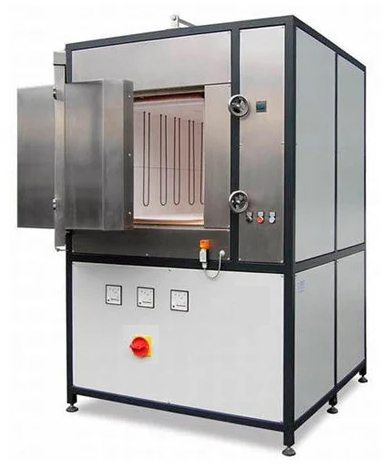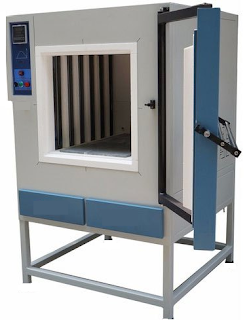Electric Furnaces | Furnace
Electric furnaces have become a popular choice for heating homes, commercial spaces, and industrial settings. In this article, we will explore the various aspects of electric furnaces, including their types, working principle, advantages, disadvantages, energy efficiency, maintenance, safety, environmental impact, applications, installation process, cost analysis, troubleshooting, and future trends. Whether you're considering upgrading your heating system or simply curious about electric furnaces, this comprehensive guide will provide you with valuable insights.
Types of Electric Furnaces
There are several types of electric furnaces available in the market. The most common ones include resistance heating furnaces, arc furnaces, and induction furnaces. Resistance heating furnaces generate heat by passing an electric current through a resistive element, while arc furnaces utilize electric arcs to produce high temperatures. Induction furnaces, on the other hand, use electromagnetic induction to heat the material placed inside the furnace.
Working Principle
To understand the working principle of an electric furnace, we need to grasp the basic concept of how heat is generated using electricity. Electric furnaces utilize heating elements, such as resistive wires or electrodes, which heat up when an electric current flows through them. The heat generated is then transferred to the surrounding air, which is circulated using a blower or a fan. The thermostat controls the temperature, ensuring the desired comfort level is maintained.
Advantages and Disadvantages
Electric furnaces offer several advantages. Firstly, they are highly efficient at converting electricity into heat, resulting in minimal energy wastage. Additionally, electric furnaces do not require fuel storage or combustion, eliminating the need for chimneys or venting systems. They are also relatively safer than other heating systems, as there is no risk of gas leaks or carbon monoxide poisoning. However, electric furnaces have higher operating costs compared to gas or oil furnaces, and they may not be suitable for areas with high electricity prices.
Energy Efficiency
Electric furnaces are known for their energy efficiency. Modern models come with advanced features like variable-speed blowers, programmable thermostats, and zoning capabilities, allowing precise control over temperature and airflow. This helps in reducing energy consumption and optimizing comfort levels. When compared to traditional heating systems, electric furnaces provide better energy efficiency ratings, resulting in potential cost savings over the long term.
Maintenance and Safety
Proper maintenance is essential for the optimal performance and longevity of an electric furnace. Regularly changing the air filters, inspecting the heating elements, and cleaning the blower motor are some of the maintenance tasks that should be performed. It is also crucial to ensure the electrical connections are secure and free from corrosion. Safety precautions when using electric furnaces include keeping flammable materials away from the unit, installing smoke detectors and carbon monoxide detectors, and scheduling professional inspections.
Environmental Impact
Electric furnaces have a positive environmental impact due to their cleaner operation compared to fossil fuel-based heating systems. They produce zero emissions at the point of use, contributing to reduced carbon footprint and improved indoor air quality. Furthermore, electric furnaces can be powered by renewable energy sources such as solar or wind, making them even more eco-friendly.
Applications
Electric furnaces find applications in various settings. In residential use, they provide reliable heating for single-family homes, apartments, and condominiums. In industrial applications, electric furnaces are used for metal smelting, heat treatment, and glass manufacturing, among other processes. Commercial settings like offices, retail stores, and restaurants also benefit from electric furnaces, offering comfort to employees and customers.
Choosing an Electric Furnace
When selecting an electric furnace, several factors should be considered. These include the size and capacity of the furnace, the insulation of the building, climate conditions, and the specific heating requirements. It is essential to choose a properly sized furnace to ensure optimal performance and energy efficiency. Additional features like air filtration, humidification, and smart thermostats should also be taken into account based on individual preferences and needs.
Installation Process
The installation of an electric furnace involves several steps. It is recommended to hire a professional HVAC contractor for a safe and efficient installation. The process includes evaluating the electrical system, selecting the appropriate location for the furnace, connecting the ductwork, and configuring the thermostat. Professional installation ensures proper wiring, adequate airflow, and compliance with local building codes and safety standards.
Cost Analysis
The cost of an electric furnace consists of the initial investment and the operating costs over time. The initial investment includes the price of the furnace itself, installation charges, and any necessary modifications to the electrical system. Operating costs depend on factors such as electricity rates, insulation quality, and usage patterns. Although electric furnaces generally have higher operating costs compared to gas or oil furnaces, the absence of fuel costs and potential energy savings can make them cost-effective in certain situations.
Troubleshooting
Like any heating system, electric furnaces may experience issues from time to time. Some common problems include a malfunctioning thermostat, faulty heating elements, airflow restrictions, or blower motor issues. Simple troubleshooting steps, such as checking the circuit breakers and air filters, can sometimes resolve minor issues. However, for complex problems or if unsure about the troubleshooting process, it is recommended to seek assistance from a professional HVAC technician.
Future Trends
The future of electric furnaces is promising, with continuous technological advancements aimed at enhancing performance and energy efficiency. Integration with smart home systems allows homeowners to control their heating remotely and monitor energy consumption. Moreover, electric furnaces are increasingly being designed to work in synergy with renewable energy sources, contributing to sustainable heating solutions.
Conclusion
In conclusion, electric furnaces provide a modern and efficient heating solution for various settings. With their energy efficiency, they offer a reliable and eco-friendly alternative to traditional heating systems. Electric furnaces come in different types, such as resistance heating furnaces, arc furnaces, and induction furnaces, each catering to specific heating needs. They work by utilizing electric current to generate heat, which is then distributed through the space using a blower or fan. One of the significant advantages of electric furnaces is their high energy efficiency, resulting in potential cost savings in the long run. They are also safer than fuel-based systems, as there is no risk of gas leaks or carbon monoxide poisoning. Maintenance for electric furnaces involves regular inspections, cleaning, and ensuring secure electrical connections.
FAQs
Q1: How long do electric furnaces last?
A1: On average, electric furnaces have a lifespan of 15 to 20 years. With proper maintenance and regular inspections, they can provide reliable heating for many years.
Q2: Can I use an electric furnace for cooling as well?
A2: No, electric furnaces are designed specifically for heating purposes. To cool your home or space, you would need an air conditioning system or a separate cooling solution.
Q3: Are electric furnaces noisy?
A3: Electric furnaces are known for their quiet operation. Unlike some other heating systems that may produce noise from burners or fans, electric furnaces generally operate silently.
Q4: Can I install an electric furnace in any home?
A4: Electric furnaces can be installed in most homes, as they do not require a gas supply or a chimney. However, it is important to ensure that your electrical system can handle the furnace's power requirements and that the necessary electrical connections are in place.
Q5: Are electric furnaces eligible for government rebates?
A5: Government rebates and incentives for heating systems vary depending on your location and the specific programs available. It is advisable to check with local authorities or energy efficiency agencies to determine if electric furnaces qualify for any rebates or financial incentives.






Post a Comment